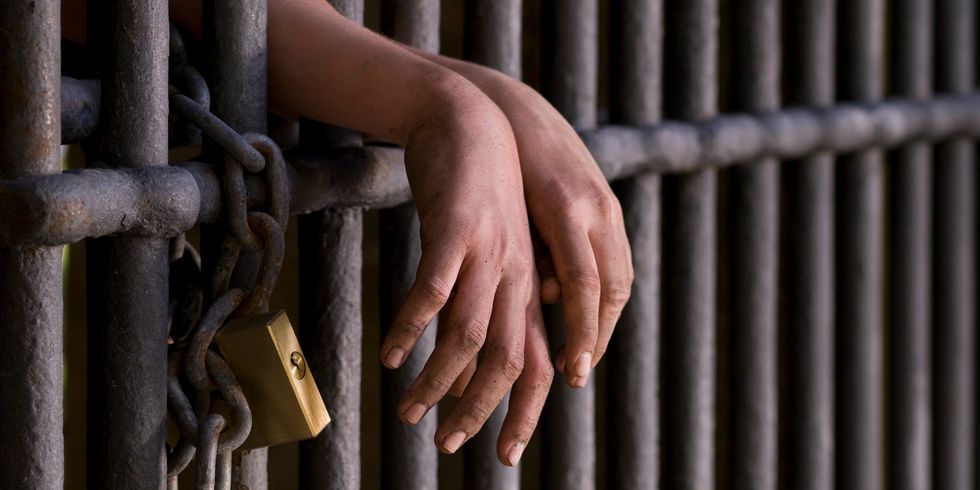The 1970’s marked the beginning of rapid growth in the US incarceration rate. This trend has been branded by some as hyperincarceration, most heavily pressing the social sphere in which class and race. With much attention in the realm of criminal justice being placed on this growing incarceration rate, a segment of the US prison population is easily overlooked. Though they may not be the most affected (because they certainly do not constitute the majority), they undoubtedly are the most afflicted: the wrongfully incarcerated.
2015 was record-setting for US exonerations, with 58 defendants exonerated for homicide, 54 for murder and 4 for manslaughter. 27 of the overall 149 exonerees were convicted on the basis of false confessions, 65 on guilty pleas, and a striking 65 involved official misconduct. A chilling 39% of those exonerated were convicted of homicide, with 5 sentenced to death, 14 to life without parole and 5 to life with the possibility of parole.
Michael Hanline had a similar story, freed after serving 36 years for a crime he did not commit. In 1978, Hanline was convicted of murder due in large part to defense attorney Bruce Robertson’s deliberate efforts to steer the investigation toward Hanline, by threatening and intimidating witnesses and holding a secret hearing in which critical police reports were sealed. In 2010, an evidentiary hearing found that Robertson’s collusion with the prosecution violated Hanline’s right that exculpatory material be turned over. After additional DNA testing in 2014, Hanline was finally released in what is the longest wrongful incarceration in California’s history.
Some methods of evidence analysis have been shown to have questionable reliability, potentially resulting in wrongful convictions. In 2004, the National Academy of Science demonstrated that lead bullet analysis was based on the unsupported belief that a bullet from a box of ammunition (perhaps the one present at the crime scene) has the same lead composition as others in the same box (like the ammunition boxes the suspect owns) and recommended its limited trial usage. Firearm analysis was also controversial, based on “tool marks” that some analysists consider unique markings on the bullets or casing of a firearm. However, courts have shown little trust in its accuracy. In US v. Glynn, the court precluded the firearms expert from providing his testimony as science, but rather in uncertain terms of “more likely than.” In US v. Alls, the court deemed the firearms expert testimony to be of “inherent subjectivity." Bite mark evidence was also deemed unreliable, as was the case for Ray Krone’s 1992 death sentence being reversed 10 years later with DNA evidence.
Some procedural and institutional practices play a role in wrongful convictions. In some 250 cases, eyewitnesses misidentified the innocent 190 times. Eyewitness identification is not only fallible given the high-stress environment, tendency to reconstruct memories, and marginal (nevertheless present) influence of the weapon focus effect; it can also be easily influenced as police can make suggestive remarks or present a lineup with an obvious anomaly or only one suspect. False confessions are made in the hope of quickly ending an interrogation or under authority pressure, as with coercion errors (in which police manipulate interrogations, compelling admission to guilt) or contamination errors (in which interrogators subtly alter suspect’s statements, attempting to draw out details in their confession). With 90% of convictions in most jurisdictions settled through plea bargaining, the pressure to secure guilty pleas threatens defendants (including the innocent) with potentially long prison terms in the case that it is taken to trial or gives them the impression that at the very least that their plea will win them some leniency from the sentencing judge. Brady v Maryland (1963) held that the prosecution must turn over any evidence favorable to the defendant, as a part of their due process rights. A prime example of Brady material being suppressed and leading to a wrongful conviction is the aforementioned case of Hanline.
The first exonerations made on the basis of DNA evidence were in 1989, and among the first 225, 71% involved eyewitness misidentification, 45% inaccurate “scientific” analysis and 28% false confessions.
Future wrongful convictions can be prevented by advancing research to test the reliability and accuracy of analysis methods. Additionally, prosecutorial offices have created Conviction Integrity Units (CIU), dedicated to investigating wrongful convictions. With over 2300 local offices in the United States, however, only 29 CIU’s exist.
While freedom for the innocent strikes at the conscience of many, releasing lives unjustly trapped behind bars is also necessary for maintaining the institutional legitimacy of our judicial system, as for some cases, deliberate obstructions of justice were the reason for wrongful incarcerations. The system must live up to its original intent and circumvent complications which stand in the way of achieving its purpose of justice.
















